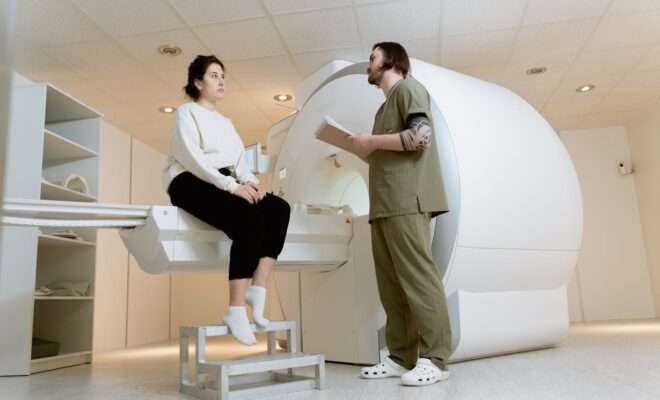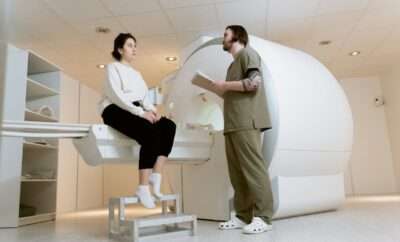
5 Effective Treatment Options for Uterine Fibroids
5 Effective Treatment Options for Uterine Fibroids
Uterine fibroids are common noncancerous growths that develop in or around the uterus. While they can be asymptomatic in some cases, they can fluctuate in size and amount, causing obvious symptoms such as frequent urination, pelvic pain, and heavy menstrual flow. This article investigates five effective treatments that have helped persons with uterine fibroids achieve success. Below are listed 5 effective treatment options for uterine fibroids.
1. Medications for Symptom Management
Medication might be a good first line of treatment for those with mild to severe symptoms of uterine fibroids. Many times, medications help by controlling hormones or lowering the synthesis of certain hormones that support the development of fibroids. Commonly given and acting by momentarily lowering estrogen and progesterone levels, gonadotropin-releasing hormone (GnRH) agonists might cause fibroids to shrink.
Another drug used to treat excessive menstrual bleeding connected with fibroids is tranexamic acid. It can be quite successfully used during menstruation as it stimulates blood clotting. Many times, drugs are advised as either a first therapy or as a choice for those who want to postpone surgery. Patients should see their healthcare practitioner to decide the best course of action, as drugs have probable side effects and hazards.
2. Uterine Fibroid Embolisation (UFE)
Uterine fibroid embolisation, or UFE, is a minimally invasive therapy that has grown in popularity due to its ability to treat uterine fibroids without requiring major surgery. Under this technique, a radiologist injects microscopic particles to restrict the blood flow to the fibroids after a small catheter is passed into the uterine arteries. Cutting off their blood supply causes the fibroids to shrink and die, therefore reducing symptoms like pelvic discomfort, heavy bleeding, and pressure.
Those who wish to keep their uterus and avoid surgical removal will especially find UFE intriguing. Usually lasting one to two weeks, recovery from UFE is very fast; many individuals find great relief from their symptoms within a few months. UFE cannot be appropriate for everyone, even if it is usually regarded as safe and efficient.
3. Myomectomy: Surgical Removal of Fibroids
Myomectomy is a surgical procedure whereby fibroids are removed, leaving the uterus whole for those who want to retain their uterus while obtaining long-term comfort. The location, size, and quantity of fibroids will determine the numerous techniques a myomectomy can use. Among the several forms of myomectomy are hysteroscopic, laparoscopic, and abdominal ones. Although each approach has advantages and disadvantages, the goal remains to eradicate fibroids and alleviate symptoms while retaining reproductive potential.
Those who plan to conceive in the future benefit most from a myomectomy since it does not impact fertility in the same way that a hysterectomy does. Regular follow-up therapy is often recommended to monitor for regrowth. The surgical strategy used influences the recovery period for myomectomy; less intrusive approaches typically enable faster healing.
4. Hysterectomy: A Permanent Solution
Hysterectomy can be seen as a more permanent fix for patients with significant symptoms or big, numerous fibroids. The uterus is removed during a hysterectomy; occasionally, the ovaries and fallopian tubes are also removed, therefore eradicating fibroids and stopping their recurrence. Although this operation is decisive and provides relief from symptoms, including heavy bleeding, discomfort, and frequent urination, it is also a major choice as it results in the loss of fertility and brings about alterations connected with the removal of the uterus.
Among the several forms of hysterectomy operations are partial hysterectomy, which spares the cervix, and complete hysterectomy, in which the whole uterus is removed. Individual health, degree of symptoms, and personal preferences of the patient determine the kind of treatment chosen. Usually advised only when the person chooses a permanent remedy or after other treatment choices have shown ineffectual is a hysterectomy. Consult an experienced specialist for uterine fibroid treatment in Memphis, TN, or anywhere you live that will treat you and guide you about this treatment and prevention.
5. MRI-Guided Focused Ultrasound Therapy (MRgFUS)
A non-invasive treatment called MRI-guided focused ultrasonic therapy, sometimes referred to as MRgFUS, employs high-intensity focused ultrasonic pulses to remove fibroids. Doctors can precisely target fibroids and apply ultrasonic energy to burn and break down fibroid tissue under the direction of MRI imaging, therefore sparing surrounding healthy tissue. Those looking for a non-surgical solution will find this therapy perfect as it does not entail incisions and typically results in quick recovery, allowing them to resume their normal activities within a day or two.
Because MRgFUS does not need the removal of reproductive organs, it is especially beneficial for patients who want to avoid surgery while maintaining fertility. Though this therapy is typically recommended for patients with less easily accessible fibroids, it is not appropriate for everyone. Even if MRgFUS shows promising results in terms of symptom relief and fibroid reduction, treatment cannot be as beneficial for those with many fibroids.
Conclusion
Uterine fibroid treatment options include a variety of methods adapted to each individual’s circumstances, lifestyle, and health objectives. From surgeries like myomectomy and hysterectomy to drugs that offer symptom alleviation, every choice has special advantages and drawbacks. Those who wish to avoid traditional surgery while still receiving effective symptom relief can discover less invasive choices in uterine fibroid embolisation and MRI-guided targeted ultrasonic therapy. Consultation with a skilled healthcare practitioner is required to make an informed decision based on long-term health and wellbeing concerns.














